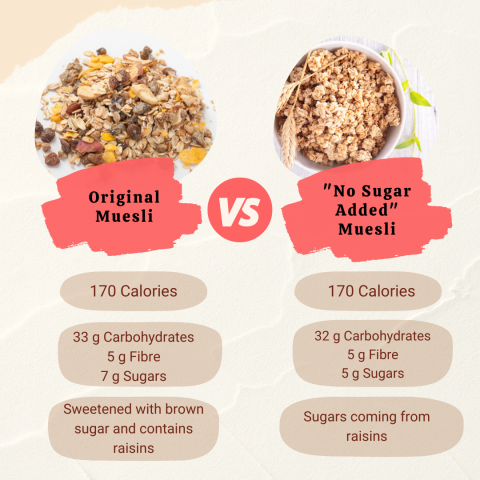Whats New
Reading Food Labels: New Changes to Sugars-Related Claims
Health Canada has recently made several changes to packaged food labelling, including
- The addition of mandatory front-of-package (FOP) symbols for products “high in” (i.e., with ≥ 15% Daily Value) total sugars, sodium, and/or saturated fat, and
- Updates to sugars-related nutrient content claims.
The food industry has until January 2026 to adopt these changes.
Sugars-Related Nutrient Content Claims
Nutrient content claims are statements located on the front of the package to highlight the content of certain nutrients in the product. There are six sugars-related nutrient content claims permitted in Canada, including one new claim:
Full details on requirements to meet each of these sugars-related claims can be found on our website.
For foods that display a “high in sugars” FOP symbol,
- “Free of sugars”, “Low in sugars”, "Lower in sugars", “No added sugars”, and “Unsweetened” are prohibited to avoid consumer confusion.
- The claim “Reduced in sugars” is permitted to allow companies to highlight reformulation efforts.
Are products “reduced in sugars” or “no sugar added” always a better choice?
Because sugar plays a variety of roles in food products - from sweetness to adding bulk, colour, and texture - other ingredients are often used to replace these functions.
 This example compares a regular muesli cereal to the company’s “no sugar added” version:
This example compares a regular muesli cereal to the company’s “no sugar added” version:
- Calories per ½ cup serving are exactly the same.
- Carbohydrates and fibre content are similar between the two versions.
- Sugars was reduced by two grams in the “No Sugar Added” version. The remaining 5 g sugars in the reformulated version are coming from raisins.
- The ingredient list and Nutrition Facts table in this and other reformulated products, will identify any changes in composition and nutritional value. This allows consumers to compare these products for carbohydrate and calorie information.
For more information:



(1).png)